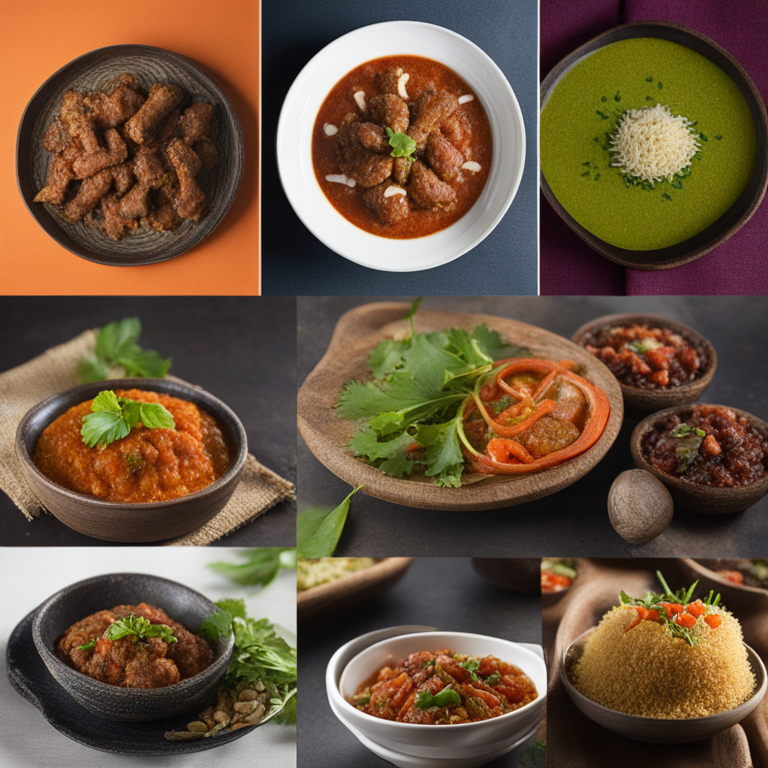Introduction
In recent years, there has been a significant shift towards plant-based diets worldwide, driven by concerns about health, sustainability, and animal welfare. This trend has not only affected Western cuisines but has also made its way into traditional Indian cuisine, where plant-based meat alternatives are gaining popularity. From vegan butter chicken to soy kebabs, Indian chefs and home cooks are coming up with innovative ways to incorporate plant-based proteins into classic dishes. In this blog post, we will explore the rise of plant-based meat alternatives in Indian cuisine, why they are becoming increasingly popular, and how you can incorporate them into your own cooking.
The Popularity of Plant-Based Meat Alternatives in Indian Cuisine
Traditional Indian cuisine is heavily reliant on meat dishes, with popular dishes such as butter chicken, kebabs, and biryani featuring prominently on restaurant menus and in home kitchens. However, as more people around the world turn towards plant-based diets, Indian chefs and food companies are adapting to meet the demand for meat alternatives.
The popularity of plant-based meat alternatives in Indian cuisine can be attributed to several factors. Firstly, concerns about health and sustainability are driving people to seek out plant-based options that are lower in fat and cholesterol, as well as better for the environment. Additionally, the rise of vegetarianism and veganism in India has also contributed to the demand for plant-based alternatives to meat.
One of the main reasons for the popularity of plant-based meat alternatives in Indian cuisine is the versatility of Indian spices and flavors, which can easily be adapted to create delicious plant-based dishes. Chefs are using ingredients such as tofu, seitan, jackfruit, and soy protein to create plant-based versions of traditional meat dishes, often with impressive results.
Tips for Incorporating Plant-Based Meat Alternatives in Indian Cooking
If you are interested in incorporating plant-based meat alternatives into your own Indian cooking, here are a few tips to get you started:
1. Experiment with different types of plant-based proteins, such as tofu, tempeh, seitan, and jackfruit, to find the flavors and textures that work best for your dishes.
2. Don’t be afraid to get creative with your spices and seasonings. Indian cuisine is known for its bold and flavorful spices, so don’t be afraid to experiment with different combinations to create unique plant-based dishes.
3. Look for recipes online or in cookbooks that specialize in plant-based Indian cooking. There are many talented chefs and bloggers sharing their delicious plant-based recipes, so take advantage of their expertise and try out some new dishes.
4. Don’t be afraid to adapt traditional meat recipes to incorporate plant-based alternatives. Whether you’re making kebabs, curries, or biryanis, there are plenty of ways to swap out meat for plant-based proteins without sacrificing flavor or texture.
Conclusion
The rise of plant-based meat alternatives in Indian cuisine is a promising trend that reflects changing attitudes towards food and sustainability. As more people around the world embrace plant-based diets, Indian chefs and home cooks are finding creative ways to incorporate plant-based proteins into traditional dishes, creating delicious and satisfying meals that are better for our health and the environment. Whether you’re a lifelong vegetarian or someone looking to reduce your meat consumption, there are plenty of ways to enjoy the flavors of Indian cuisine without sacrificing taste or tradition. So why not give plant-based meat alternatives a try in your own cooking and discover the exciting world of plant-based Indian cuisine?
👉 [Best Deals on Amazon!](https://amzn.to/abcd) | [Flipkart](https://fkrt.it/xyz123)
